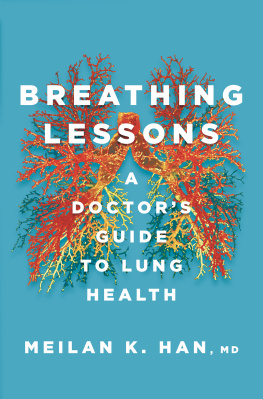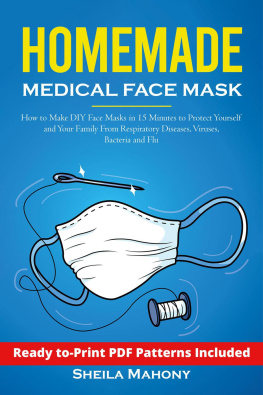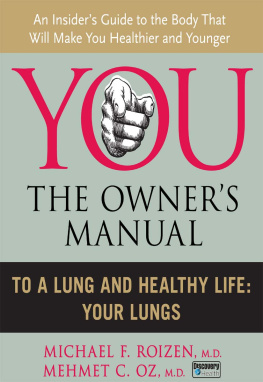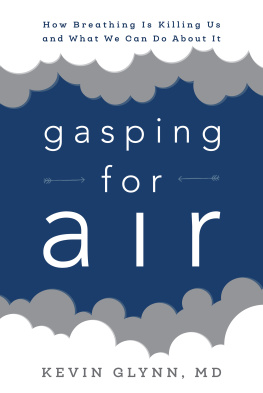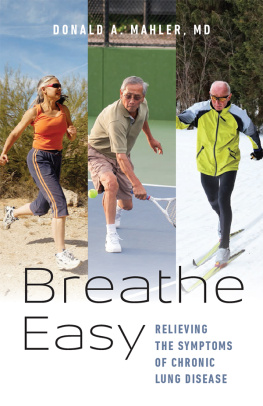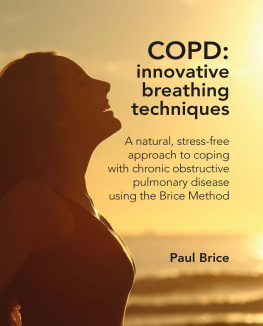
Breathing
Lessons
A Doctors Guide
to Lung Health
MeiLan K. Han, M.D.

W.W. NORTON & COMPANY
Independent Publishers Since 1923
For my patients: past, present, and future
I grew up in a small town in Idaho where my father worked as a nuclear engineer and my mother as a nurse and teacher. I attended the University of Washington for medical school, as do many aspiring physicians from the less populous northwestern states. Having grown up and trained in rural areas, I intended to go back to Idaho to serve a small-town community where the need for well-trained doctors is large. But somewhere along the way, I was drawn to pulmonary and critical care medicine, in particular researching how we can better diagnose and treat lung disease. I wanted to contribute to the greater societal good, and in pulmonary medicine I felt that I could have the greatest impact.
I am now a professor of medicine in the Division of Pulmonary and Critical Care at the University of Michigan Medical Center. As a clinician, I have spent the last 20 years taking care of thousands of patients with a huge variety of lung problems. As a researcher, I have focused on gathering and analyzing data to help the global community better understand who becomes sick, how and why they become sick, and what we can do about it. To this end, I have enrolled patients into clinical trials. I have worked with others at my institution to develop imaging software that helps us better visualize the lungs and quantify the amount of disease. I have also partnered with the National Institutes of Health to explore how we can better set research agendas for the future, and consulted with pharmaceutical companies to help develop new treatments for patients.
Through all of these interactions, what has struck me is both how little most of my patients understand about how the lungs work and how little attention lung disease receives, especially compared with other health conditions. That is, until the youth vaping epidemic and then the COVID-19 pandemic struck. Suddenly, many had questions about how the lungs work, what smoking and vaping do to the lungs, what exactly causes oxygen levels to drop, and how devices like mechanical ventilators support failing lungs.
The lungs are incredible. This single organ provides our bodies with life-giving oxygen, rids us of excess carbon dioxide, and regulates the bloods acid-base balance while also moving air past our vocal cords and nose, allowing us to speak, sing, and even smell. In reading this book, I hope you share my excitement in understanding how your lungs work. But one of the problems that the lungs face is that they actually work a bit too well. By this I mean they can suffer quite a bit of damage before anyone notices. Unfortunately, this also means that lung disease is too often ignored by both patients and physicians until late in the disease course. In this book, I address the challenge human lungs face in being constantly exposed to the environment and the crucial role they play in protecting us. I explore all the things that can go wrong with the lungs. (Spoiler alert: There are many!) And I explain the process lung doctors go through in diagnosing and treating lung conditions.
Perhaps most importantly, I want to help you understand how you can protect your lungs. Beyond telling people not to smoke, this isnt something we as physicians do enough of. We dont talk about lung health, and thats a problem. We dont give our patients the information they need to preserve their lung capacity, which is crucial to preserving overall health. Lung health begins in the womb and extends throughout childhood and into adulthood, when we finally reach peak lung function. If you are a parent, this is information you need to know to protect your children. If you are a young adult, this is information you need to set yourself up for a lifetime of health. And if you are a patient or have a friend or family member living with lung disease, this book will hopefully help you have more informed conversations with your health care providers.
I also offer my perspective on the peculiar position the field of lung medicine finds itself in and how I believe we got here. Lower respiratory infections, primarily caused by bacterial infections, are the leading cause of death among children worldwide. Chronic obstructive pulmonary disease (COPD) is the third leading cause of death worldwide, and yet it continues to fly under the publics radar. Lung diseases remain poorly recognized and poorly understood. Factors that contribute to lung disease, such as air pollution, should be front and center in the mind of everyone, and yet they are not. Every doctors office should have a spirometer to measure lung function, and yet they do not. The amount of money invested into lung research should be proportionate to the number of patients living with lung disease, and yet it is not.
The good news is that the tide may be turning. The first step is understanding. I hope that this book helps in that effort and that the information in it helps make your life and the lives of those around you better.
Breathing Lessons
B reathe in. Breathe out. The act seems simple enough. Try it for a moment. Feel more relaxed? The average person takes over 600 million breaths in their lifetime without giving the activity a second thought. Breathing is an unapplauded marathon. Being able to breathe easily is something most of us take for granted. That is, until it isnt. Nothing is more panic inducing than not being able to breathe. For my entire life, not being able to breathe has been a recurring nightmare. Each time the dream differs in its details, but it always ends the same. Ive been trapped by something or someone, and I go to scream. I cant breathe. I cant make even a sound, and I panic. I wake up. And so it is for the millions of individuals living with chronic lung disease, anxiety with every breath.
Yet as important as the lungs are, it is remarkable how poorly understood they are by most people. Most people have at least a rudimentary understanding of how the heart works, but the lungs remain a black box. I have spent nearly 20 years of my life as a pulmonologist, and regardless of the patients background or level of education, the first visit is always similar. We sit down together, I get out a piece of paper, and I start drawing. I map out the upside-down treelike structure of the lungs. I explain where the air goes and, perhaps most confusingly, how the blood goes from the heart to the lungs to exchange carbon dioxide for oxygen and back to the heart before being pumped out to the rest of the body. While I am a physician and a researcher, I am also an educator. I firmly believe that my patients must understand how their lungs work. It is only then that they can be true partners in recovering from disease and preserving their own lung health.
If you are among those who do not understand how the lungs work, you are in good company. The purpose of breathing remained a mystery for centuries. More than 2,000 years ago, the Greek physician Hippocrates recognized that breathing was a sign of life. But in the absence of anatomic dissection, he taught his students that the soul originated from air (pneuma) that was inspired through the nose into the brain. Around the same time, the philosopher Plato taught that breath entered the body through the skin and exited via the nose. Even after human and animal dissection became common practice, the flow of blood from the heart to the lungs and back to the heart was not sorted out until the 1600s. It wasnt until 1775, when oxygen was discovered by the French chemist Antoine Lavoisier, that it was recognized that the lungs exist to perform two primary functions: to take in oxygen and to expel carbon dioxide. And even today, there is much still to discover.
Next page
